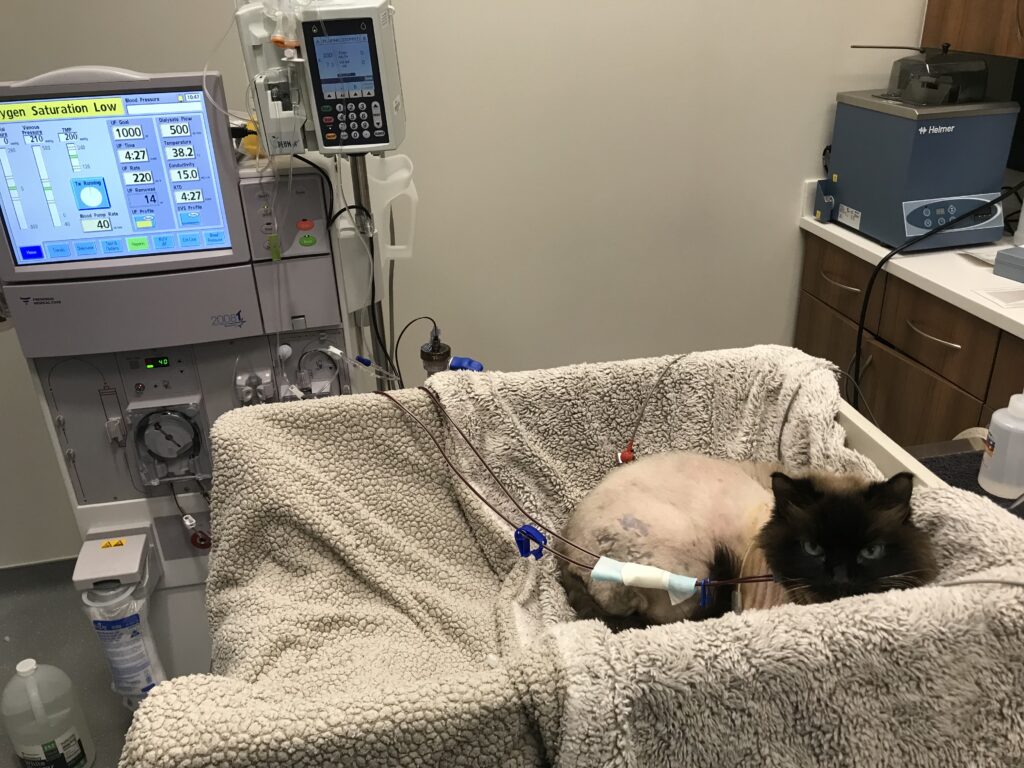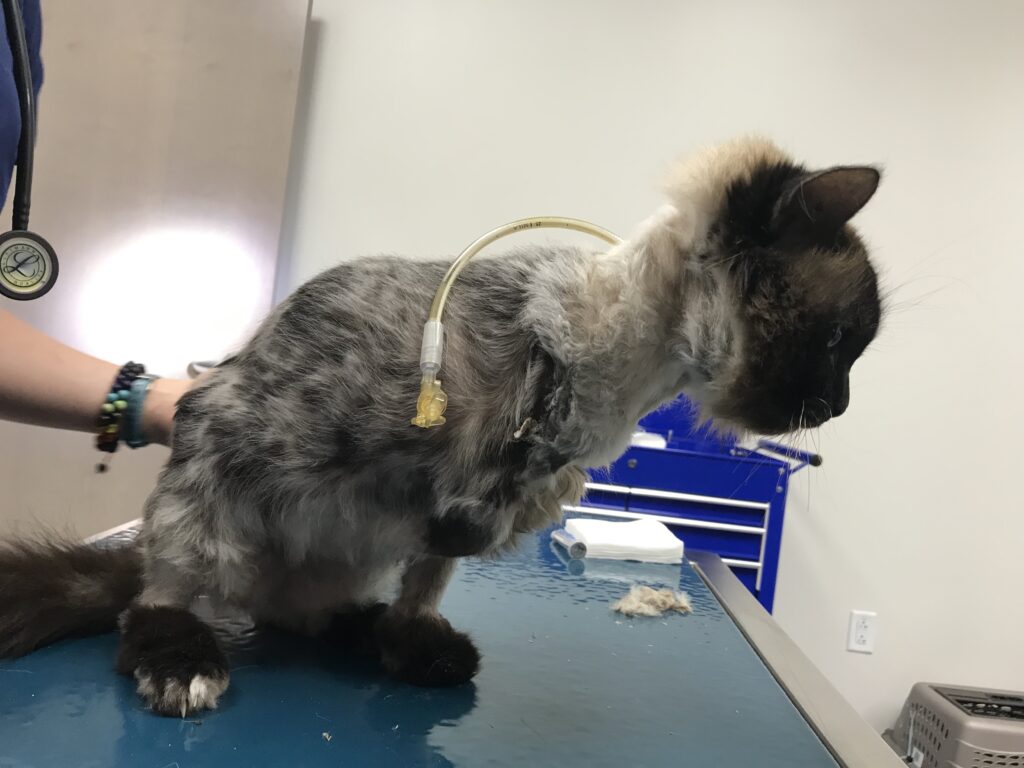Cocoa is an 11 year old Ragdoll cat that was recently treated by the CASE Nephology & Extracorporeal Therapies Service after sustaining dog bite wounds to her hind end and developing a secondary acute kidney injury (AKI). The kidneys are extremely important organs that can be injured for many reasons including infection, severe inflammation throughout the body (i.e., pancreatitis), lack of blood flow (ischemia), toxins, trauma, etc. Cocoa’s kidney injury was likely multifactorial between infection, inflammation and trauma. Following her injury, Cocoa’s kidneys quickly shut down and were not making any urine. In this scenario, toxins start to build up in the body because the kidneys are not performing their job of eliminating toxins. These toxins can lead to further dysfunction, ultimately causing other organs to shut down as well.
Hemodialysis is the only effective treatment to eliminate these toxins and acts as a bridge to buy time for the kidneys to recover. This recovery from AKI can take up to 3 months to re-establish a new baseline level of kidney function. With Cocoa on the verge of death with a high potassium concentration and cardiac arrhythmias, she had a dialysis catheter placed on the right side of her neck and hemodialysis was started. A feeding tube was also placed to help maintain daily caloric intake, hydration, and to facilitate medication administration during recovery.
Hemodialysis is a mode of extracorporeal therapies (ECTs) where blood is removed from the body and passed through a filter, which allows dialysate to facilitate clearance of the uremic toxins building up in the body. Since Cocoa’s kidney values were extremely elevated (Creatinine 17.5 mg/dL; normal 1.0 mg/dL), along with her electrolytes (potassium and phosphorus), she had three prolonged sessions of hemodialysis (6-10 hours each) to slowly remove the toxins. After the first 3 treatments were completed during the first week in hospital, Cocoa was transitioned to intermittent hemodialysis (IHD) to more effectively clear the uremic toxins in a shorter amount of time (4 hours).
Unfortunately for Cocoa, at the end of the first week, she began limping and ultimately not putting weight on her right forelimb. Her paw was cold to the touch and there was no blood flow, suggesting she developed a clot that had migrated to her right paw. The tissue was non-viable and the leg could not be saved. Cocoa had a right forelimb amputation to prevent severe infection from developing. She continued to gain strength on three legs throughout her recovery and is showing no signs of slowing down! Cocoa went on to receive IHD three times weekly on an outpatient basis for three weeks, then she was able to decrease the frequency to twice weekly on week four. Cocoa ultimately was dialysis independent the following week! Her kidney values continue to improve, with her most recent creatinine being 1.6 mg/dL, a marked improvement from 17.5mg/dL. It is common for patients to have some degree of chronic kidney disease after a severe acute injury, which generally requires management with long-term diet, hydration, and medications.
Cocoa is thriving at home, eating on her own and living her best life! Without hemodialysis, Cocoa would not be here today. Her story highlights the remarkable ability the kidneys have to regenerate and recover after severe injury. This recovery process does take time (up to 3 months to re-establish new baseline kidney function). Hemodialysis is used to bridge that gap in the acute phase of the recovery process, making patients feel better during this time. Cocoa’s story is truly remarkable, and she is one of our favorite patients here at CASE!



